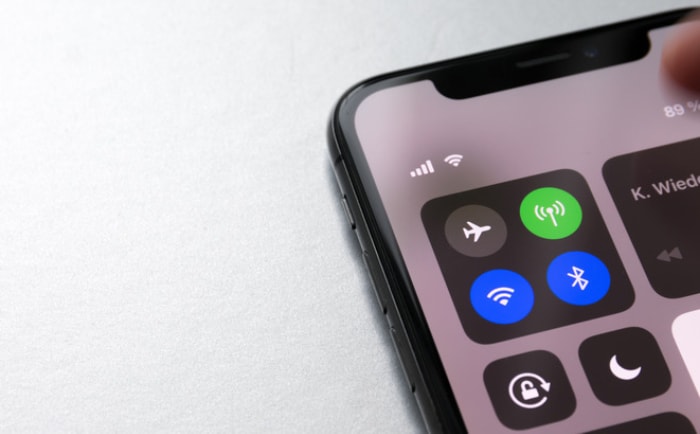Can Parents See Your Search History? Know What’s Visible

Imagine staring at your screen, hesitating before typing that personal question into Google. That moment of uncertainty – wondering if someone else might see what you’re searching for – brings up real concerns about privacy and independence.
From medical questions to entertainment preferences, your search history tells a story about your interests, concerns, and curiosities.
The reality of online privacy isn’t as simple as clearing your browser history. Modern technology offers various ways to monitor internet activity, but it also includes limitations and boundaries.
This creates questions about what information stays private and what becomes visible to others, especially parents who might be concerned about online safety.
Technical Methods of Access
Parents have various technical options to monitor internet activity, ranging from basic router checks to advanced device tracking. Each method provides different levels of visibility into online activities, though none offers complete surveillance capabilities.
Router-Level Monitoring
Router logs create records of internet traffic flowing through your home network. These logs typically show website domain names (like “google.com” or “youtube.com”), connection times, and the devices accessing these sites.
However, they don’t reveal specific search terms, messages, or content viewed on encrypted websites (those with “https://” at the start).
Parents with router access can see:
- Names of websites visited
- Time spent on each domain
- Which device connected to which site
- Amount of data transferred
- Connection timestamps
But router logs cannot show:
- Specific pages within websites
- Search terms used
- Private messages
- Content of encrypted communications
- Activities on mobile data networks
Many people believe router monitoring reveals everything, but encryption technology protects most modern web traffic.
For example, if you visit Google and search for something personal, the router only shows that you connected to “google.com,” not what you searched for.
Device-Based Access
Direct access to devices offers more detailed monitoring possibilities compared to router-level tracking. Browser histories store specific URLs, search terms, and timestamps of visited pages.
However, the extent of visible information depends on the browser settings and monitoring methods used.
Signs that indicate device monitoring:
- New apps appearing without your installation
- Battery draining faster than usual
- Device running slower than normal
- Unusual network activity
- Strange background processes
Browser histories typically display:
- Complete URLs of visited pages
- Search terms entered
- Time and date of visits
- Downloaded files
- Cached page content
On phones and computers, parents might use built-in features like Screen Time on iOS or Family Link on Android. These tools track:
- App usage duration
- Website visits
- App downloads
- Location data (if enabled)
- Time restrictions
- Content filtering
However, device monitoring has limitations. Private browsing modes prevent local history storage, and some messaging apps use end-to-end encryption.
Additionally, monitoring software must be actively installed and maintained to function effectively.
Common Monitoring Tools

Parents often use specialized software to monitor their children’s online activities. These tools range from basic tracking apps to comprehensive monitoring solutions.
While some are obvious and visible on your device, others operate discreetly in the background.
Parental Control Software
Popular monitoring applications like Qustodio, Norton Family, and Kaspersky Safe Kids offer parents various tracking capabilities.
These apps typically require installation on both the parent’s and child’s devices, creating a connection that allows parents to view activity reports and set restrictions.
These applications can monitor:
- Websites visited and blocked attempts
- Time spent on specific apps
- Social media activity (on supported platforms)
- Location tracking through GPS
- Text messages (on some devices)
- Screen time limits and schedules
- App installation and usage
- YouTube viewing history
You might notice monitoring software on your device through several indicators.
Your device settings might show unusual permissions granted to unfamiliar apps. On smartphones, you’ll often see a persistent notification that can’t be dismissed, indicating active monitoring.
The effectiveness of these tools varies by platform. On iOS devices, monitoring capabilities are more limited due to Apple’s strict privacy policies.
Android devices generally allow more comprehensive monitoring. For example, an Android monitoring app might track all text messages, while an iOS version might only report screen time statistics.
However, these tools have significant limitations. They cannot:
- Monitor encrypted messaging apps like Signal or WhatsApp
- Track content within social media private messages
- Record passwords or banking information
- Access data from apps that use strong encryption
- Monitor activities when the device is offline
Parents often use combinations of these tools to create comprehensive monitoring systems. For instance, they might pair Norton Family with Google Family Link to cover both web browsing and app usage. This creates multiple layers of monitoring that can be harder to detect or bypass.
The presence of monitoring software often shows up in your device’s battery usage statistics. Look for unfamiliar apps consuming significant battery life or running constantly in the background.
On computers, these programs might appear in the task manager or activity monitor, though some use generic names to blend in with system processes.
To maintain open communication, many parents inform their children about installed monitoring software. This transparency helps build trust while ensuring safety.
The most effective monitoring happens when both parents and teens discuss boundaries and agree on reasonable limits for online activities.
Privacy Limitations

Online privacy tools and features offer various levels of protection, each serving different purposes in safeguarding your digital activities. The effectiveness of these tools depends on how they’re used and what you’re trying to protect.
Private Browsing Capabilities
Private browsing modes, like Chrome’s Incognito Mode or Firefox’s Private Browsing, provide specific privacy protections focused on local device security. These modes prevent your browser from saving your browsing history, cookies, and search entries after closing the window.
However, private browsing has its limitations beyond your device. Your internet service provider (ISP) can still see which websites you visit, and your school or workplace network administrator can track these visits too.
The websites you browse can also identify your IP address and collect data about your browsing session.
Think of private browsing as a basic privacy tool – it simply keeps your local device free from browsing traces, nothing more.
VPN Usage Facts
Virtual Private Networks (VPNs) significantly enhance online privacy through powerful encryption and IP address masking. Quality paid VPN services, unlike free alternatives, maintain strict no-logs policies and use robust encryption protocols to protect user data. This encryption ensures that even the VPN provider cannot decrypt or monitor your online activities.
When properly configured, a VPN creates a secure tunnel that shields your data from ISPs, network administrators, and potential eavesdroppers. Your real IP address stays hidden, and your internet traffic remains encrypted from end to end. Premium VPN services also offer helpful features like malware blocking, ad filtering, and multiple server locations for enhanced privacy and security.
Be cautious with free VPNs – they often compromise user privacy by collecting and selling data to advertisers. That’s why choosing a reputable, paid VPN service is crucial. The best VPN providers prove their reliability through regular security audits and transparent privacy policies.
For maximum protection, combine VPN usage with private browsing. While your VPN handles the broader aspects of online privacy and security, private browsing ensures no traces remain on your local device.
Impact on Family Dynamics

Online privacy discussions between parents and teens often create tension, but they also present opportunities to strengthen family relationships. Through open dialogue and mutual respect, families can develop healthy approaches to digital privacy while maintaining safety and trust.
How to Have Honest Conversations with Parents
Starting conversations about online privacy works best with a calm, direct approach. Pick a relaxed moment, perhaps during a family meal or weekend afternoon, to bring up the topic.
Present your thoughts clearly: “Mom/Dad, I’d like to talk about how we handle internet privacy in our family.”
Share specific examples of your online activities and explain why privacy matters to you. You might say, “I use the internet for researching personal topics, like health questions, and I’d feel more comfortable knowing these searches remain private.”
This helps parents see your perspective while showing maturity in addressing the subject.
Understanding Parental Concerns
Parents often monitor online activities because they care about safety. Common worries include online predators, cyberbullying, exposure to inappropriate content, and personal data security.
Acknowledging these concerns shows emotional maturity and creates room for compromise.
Parents might fear missing signs of serious problems like cyberbullying or online harassment. They may also worry about academic performance if too much time goes to social media or gaming.
Recognizing these fears helps create productive discussions about reasonable boundaries.
Building Trust Through Responsible Behavior
Demonstrating responsible internet use strengthens trust naturally. This includes following agreed-upon time limits, completing schoolwork before recreational browsing, and maintaining open communication about online experiences.
Share positive online interactions with your parents, such as educational resources you’ve found or constructive social connections you’ve made.
Show initiative in protecting your own privacy and security. Learn about safe browsing practices, strong passwords, and social media privacy settings.
When parents see you taking these precautions seriously, they’re more likely to trust your judgment online.
When and How to Discuss Privacy Needs
Timing matters when discussing privacy needs. Choose moments when parents seem receptive and relaxed.
Avoid bringing up the topic during conflicts or right after privacy-related incidents. Frame the conversation around growing independence rather than secrecy.
Present specific privacy requests clearly. Instead of asking for complete monitoring removal, suggest gradual changes: “Could we try reducing monitoring during homework hours since I’ve maintained good grades?” This approach shows maturity and willingness to earn trust step by step.
Support your requests with examples of responsible behavior. Mention times you’ve made good choices online or handled difficult situations well.
This proves you can manage increased privacy responsibly while staying safe.
Remember that privacy discussions might need several conversations over time. Each positive interaction builds trust and opens doors for more independence. Stay patient and maintain respectful dialogue, even if initial discussions don’t yield immediate changes.
Conclusion
Online privacy between parents and teens requires balance, communication, and mutual respect. Parents use various monitoring tools because they care about safety, while teens naturally seek more independence online.
Both perspectives hold merit and deserve consideration.
The path to greater online freedom starts with demonstrating responsible internet behavior. Using privacy tools appropriately, maintaining open communication about online activities, and showing good judgment in digital spaces all contribute to building parental trust.
Small steps, like discussing specific privacy needs calmly and showing interest in online safety, often lead to positive changes in family dynamics.
Trust develops gradually through consistent actions. Parents might ease monitoring restrictions as teens show maturity in handling online situations.
Meanwhile, teens can prove their readiness for more independence by making smart choices about their digital activities. This creates a positive cycle where responsible behavior leads to increased freedom, which encourages more responsible choices.
The goal isn’t complete privacy or constant monitoring, but finding the middle ground that keeps teens safe while respecting their growing independence. Through patience, honest dialogue, and mutual understanding, families can create healthy approaches to online privacy that work for everyone.


